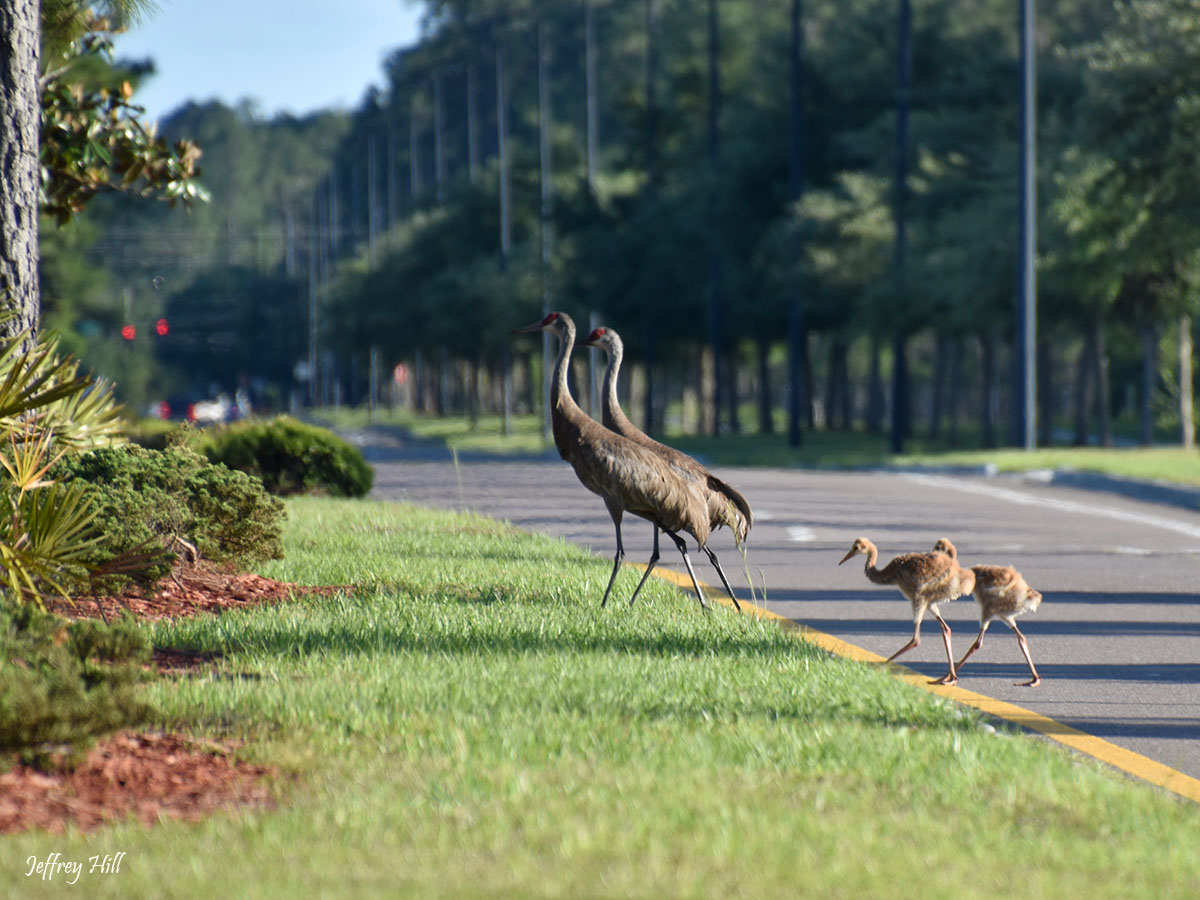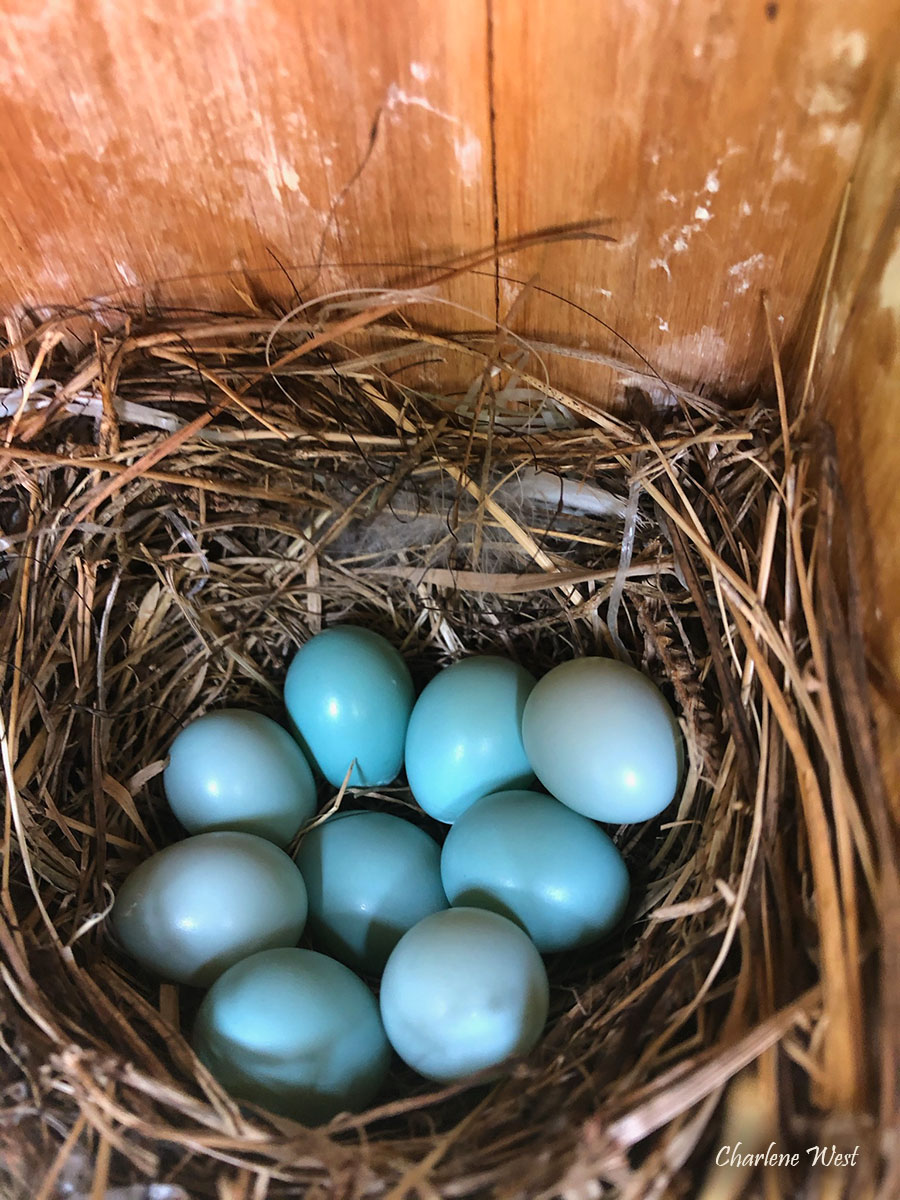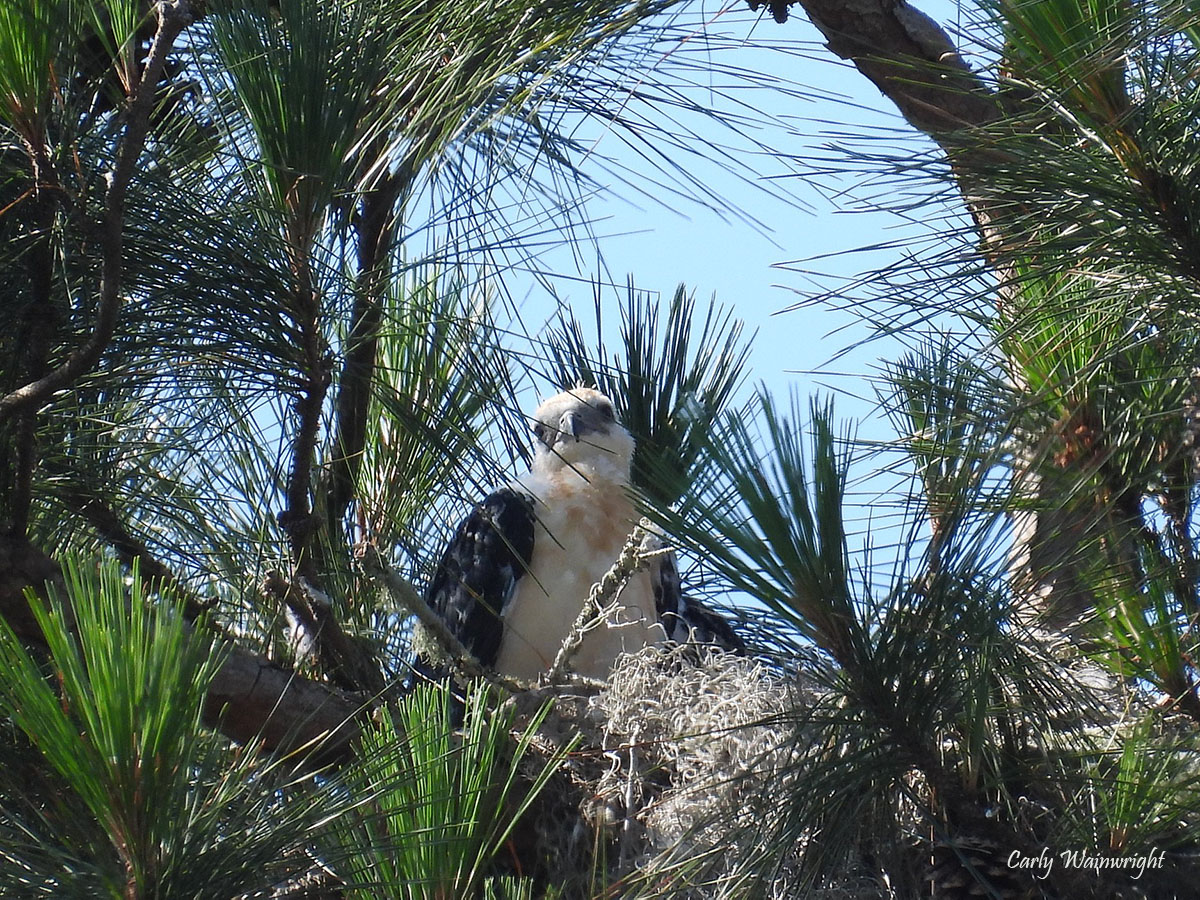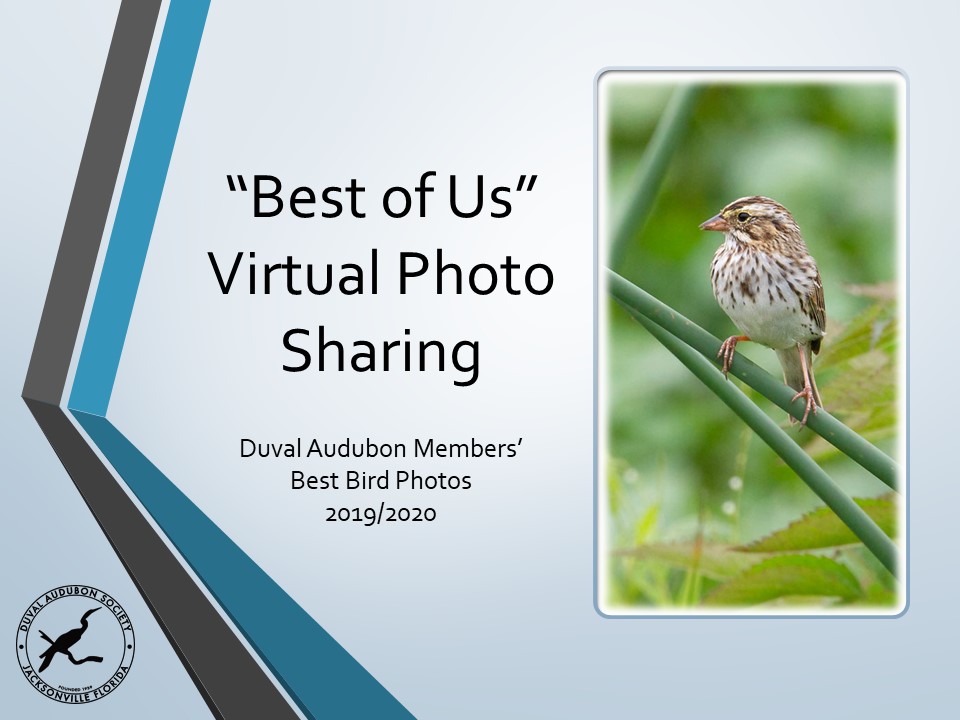SANDHILL CRANES THREATENED BY DEVELOPMENT
On the west side of Duval County there are tracts of still-undeveloped land, including some large wetland areas, known as Cecil Commerce Center North. This area is part of the former Naval Air Station Cecil Field which is now owned by the City of Jacksonville. The City has declared Cecil Commerce Center to be “a significant, long-term economic development asset to the City of Jacksonville,” and plans are underway to substantially develop this area.
The recently built FL-23, a toll road connecting I-10 to Blanding Boulevard south of Orange Park, has brought additional traffic into the area, resulting in life-threatening hazards to the wildlife that rely on these wetlands for their survival.
 We recently learned that Florida Sandhill Cranes, which are protected by the U.S. Migratory Bird Treaty Act and are listed as Threatened by Florida’s Endangered and Threatened Species Rule, are nesting in wetland areas between New World Avenue and FL 23. Unfortunately, traffic on New World Avenue is increasing, and some of the cranes attempting to cross the road to feed on the other side have been hit and killed. We recently learned that Florida Sandhill Cranes, which are protected by the U.S. Migratory Bird Treaty Act and are listed as Threatened by Florida’s Endangered and Threatened Species Rule, are nesting in wetland areas between New World Avenue and FL 23. Unfortunately, traffic on New World Avenue is increasing, and some of the cranes attempting to cross the road to feed on the other side have been hit and killed.
It is a conundrum. Two major businesses currently have distribution centers on this road and more developments are in the works. Distribution of goods and jobs are both important to our economy and wellbeing. Still, the City is allowing building on previously undeveloped land, sometimes on wetlands; part of a diminishing amount of land that the cranes and other wetland birds find suitable for nesting. We must find a way to balance the requirements of nature with the needs of people.
As development continues in this area and other parts of Duval County, we must let our elected representatives know that care must be taken and the needs of nature considered. Wetlands are important to our area, just as are business, jobs, and housing. Although the development plans for Cecil Commerce Center North are already finalized, we will be calling on you, our bird-loving community, to help inform the City about the consequences of potential lands lost to future development. Please consider contacting your Jacksonville City Council representative to share your concerns. Not sure what Council District you're in? Use this interactive map to find your district.
In the meantime, we will be working to create more awareness of the plight of these Sandhill Cranes and to come up with a solution that may help slow down the traffic on New World Avenue to protect this threatened species.
--Carolyn Antman, Conservation Director for Duval County
IT'S BABY SEASON IN NORTHEAST FLORIDA!
Late spring and early summer is nesting season for not only Sandhill Cranes but also nesting shorebirds, Eastern Bluebirds, and Swallow-tailed Kites, to name just a few. Here are some "baby season" updates:
Nesting Shorebirds Need Your Help
 This time of year, shorebirds like Royal Terns, Least Terns, American Oystercatchers, and Wilson’s Plovers nest on our Northeast Florida beaches. Many nest in the dunes, but some species build their nests right on the beach, and all nesting shorebirds are extremely vulnerable to disturbances like excessive noise, people or pets getting too close to nest sites, or predators attracted by food waste left behind by careless beachgoers. Many of the bird species that depend on these beach areas to raise their families are threatened or endangered, so it’s critical for us to take extra care when we are at the beach this summer to avoid possible disturbances to nesting shorebirds. This time of year, shorebirds like Royal Terns, Least Terns, American Oystercatchers, and Wilson’s Plovers nest on our Northeast Florida beaches. Many nest in the dunes, but some species build their nests right on the beach, and all nesting shorebirds are extremely vulnerable to disturbances like excessive noise, people or pets getting too close to nest sites, or predators attracted by food waste left behind by careless beachgoers. Many of the bird species that depend on these beach areas to raise their families are threatened or endangered, so it’s critical for us to take extra care when we are at the beach this summer to avoid possible disturbances to nesting shorebirds.
Here are some things you can do to help these birds survive: stay well away from posted shorebird nesting and feeding areas; keep your pets on a leash, and don’t let pets or children run into the dunes or “flush” birds resting on the beach; take your trash with you and dispose of fishing line properly; don’t feed birds or other wildlife at the beach; and avoid noisy activities like beach games, loud music, or fireworks near nesting areas. It could mean the difference between life and death for these vulnerable birds. Learn more here.
--Carol Bailey-White, Vice President
Bluebirds! Bluebirds! And more Bluebirds!
 As reported here earlier this year, Audubon volunteer Charlene West has been monitoring several Eastern Bluebird nest boxes in North Jacksonville. She’s had all sorts of adventures including finding snakeskin in a nest and finding eggs and chicks of other birds in the boxes. She started seeing eggs by March 15 and hatchlings by April 5 (Eastern Bluebird eggs incubate for 13-16 days). By mid-April there were chicks everywhere and by the end of April many had left the nest. Bluebirds fledge around 18-19 days after hatching. In all, Charlene has seen 37 Eastern Bluebird fledglings. As reported here earlier this year, Audubon volunteer Charlene West has been monitoring several Eastern Bluebird nest boxes in North Jacksonville. She’s had all sorts of adventures including finding snakeskin in a nest and finding eggs and chicks of other birds in the boxes. She started seeing eggs by March 15 and hatchlings by April 5 (Eastern Bluebird eggs incubate for 13-16 days). By mid-April there were chicks everywhere and by the end of April many had left the nest. Bluebirds fledge around 18-19 days after hatching. In all, Charlene has seen 37 Eastern Bluebird fledglings.
Now the parents are on their second round, with more eggs and already some new hatchlings! And not only Eastern Bluebird families are benefitting: one box even has at least three Tufted Titmouse chicks in it. Just goes to show how useful it can be to put up nesting boxes. Many thanks to Charlene for watching and reporting on the Bluebirds for us!
To learn more about Eastern Bluebirds, check out the Florida Bluebird Society.
Nesting Swallow-tailed Kites
 We all love to see magnificent Swallow-tailed Kites soaring above us in the spring and early summer, but did you know that some of them actually nest in Northeast Florida? One local Auduboner has been lucky enough to follow a pair of Swallow-tails from the beginning of the season as they began to build their nest, mate, and raise two healthy chicks. The whole process started in late March and the chicks are now on the verge of fledging. It has been an exciting spring. She has witnessed the parents sharing time on the nest, bringing food to the chicks, and other Swallow-tails helping the parents defend the nest from hawks, owls, and crows. A pair of Mississippi Kites have also shown up at the site. We all love to see magnificent Swallow-tailed Kites soaring above us in the spring and early summer, but did you know that some of them actually nest in Northeast Florida? One local Auduboner has been lucky enough to follow a pair of Swallow-tails from the beginning of the season as they began to build their nest, mate, and raise two healthy chicks. The whole process started in late March and the chicks are now on the verge of fledging. It has been an exciting spring. She has witnessed the parents sharing time on the nest, bringing food to the chicks, and other Swallow-tails helping the parents defend the nest from hawks, owls, and crows. A pair of Mississippi Kites have also shown up at the site.
This site is on private property, and for the sake of the owners and the birds, please understand that we cannot give out any information about the exact location of the nesting site.
For more information about Swallow-tailed Kites, check out Audubon's Swallow-tailed Kite page, and visit the website of ARCI (the Avian Research and Conservation Institute).
--Carolyn Antman, Conservation Director for Duval County
"BEST OF US" VIRTUAL PHOTO SHARING
 We were sorry that we couldn't host our annual "Best of Us" Photo Sharing and Potluck Dinner last month due to the worldwide health crisis. In lieu of that event, we invited our members to share their best bird photos from the past year, and they did NOT disappoint. We were sorry that we couldn't host our annual "Best of Us" Photo Sharing and Potluck Dinner last month due to the worldwide health crisis. In lieu of that event, we invited our members to share their best bird photos from the past year, and they did NOT disappoint.
We received some stunning contributions that truly showcase our members' photographic talents as well as some fascinating bird species that we don't normally see in Northeast Florida. It was a pleasure to put them all together into this virtual photo sharing video. Enjoy!
--Carol Bailey-White, Vice President
FUN THINGS TO DO AT HOME
With so many of us sticking close to home these days, it can be easy to get bored and feel like "there's nothing to do!" Well, we're here for you with some great ways to make your "at home" time much more fun and interesting!
 Bird Your Yard. Spring migration season is mostly over, but birds that breed in Northeast Florida like Eastern Bluebirds, Tufted Titmice, White-eyed Vireos, and Great Crested Flycatchers may still be feeding young this month. Listen for screechy, repetitive calls as fledglings follow their parents around, incessantly crying out to be fed. If you can offer food and water, you'll definitely see more birds, but make sure to keep it all scrupulously clean to avoid making the birds sick and possibly spreading diseases. Bird Your Yard. Spring migration season is mostly over, but birds that breed in Northeast Florida like Eastern Bluebirds, Tufted Titmice, White-eyed Vireos, and Great Crested Flycatchers may still be feeding young this month. Listen for screechy, repetitive calls as fledglings follow their parents around, incessantly crying out to be fed. If you can offer food and water, you'll definitely see more birds, but make sure to keep it all scrupulously clean to avoid making the birds sick and possibly spreading diseases.- Share Your Bird Sightings. Cornell Lab of Ornithology's eBird project is open to birders of all skill levels, and allows birders to not only share bird sightings, but also seamlessly keeps track of them for you, provides frequency charts to let you see what birds are likely in a particular area every month of the year, and much, much more! In fact, you could spend untold hours exploring all of the information available on the eBird website, and learn so much about birds in the process. eBird is also available as an app on your phone so you can enter your bird sightings as you're seeing them.
- Relax With Webcams. Another fantastic project from Cornell Lab is their Bird Cams page. Watch birds at their Sapsucker Woods feeder, tropical beauties living their best life at a fruit feeder in Panama, hummingbirds in West Texas, and much more! Audubon has some awesome bird cams as well. Want to see Puffins? Check! How about nesting Ospreys? They've got you covered! There are many viewing options available to chill out with birds as they go about their daily lives.
- Learn With YouTube. There are so many wonderful YouTube channels devoted to birds and birdwatching to help you hone your bird ID skills. Here are just a few we especially like: National Audubon Society, Audubon Florida, American Bird Conservancy, American Birding Association, BirdLife International, Cornell Lab of Ornithology, Project Puffin and Hog Island Audubon Camp. We could go on and on, but you get the picture: there's lots to choose from - including our own Duval Audubon Society channel, where we offer a variety of bird-related videos to enjoy.
- Solve a Jigsaw Puzzle. Visit our jigsaw puzzle page and challenge yourself with some beautiful bird puzzles!
- Do Some Bird Science. From ScienceBuddies.org, here are 10+ Backyard Bird Science Projects you can do with students of all ages to encourage interest in birds. Have fun and learn about birds!
With all of the resources available online for learning, relaxation, and sheer fun, it's easy to make the most of your time at home!
--Carol Bailey-White, Vice President
Duval Audubon Society, Inc.
P.O. Box 16304
Jacksonville, FL 32245
www.duvalaudubon.org
    
|

 We recently learned that
We recently learned that  This time of year, shorebirds like
This time of year, shorebirds like  As reported here earlier this year
As reported here earlier this year We all love to see magnificent Swallow-tailed Kites soaring above us in the spring and early summer, but did you know that some of them actually nest in Northeast Florida? One local Auduboner has been lucky enough to follow a pair of Swallow-tails from the beginning of the season as they began to build their nest, mate, and raise two healthy chicks. The whole process started in late March and the chicks are now on the verge of fledging. It has been an exciting spring. She has witnessed the parents sharing time on the nest, bringing food to the chicks, and other Swallow-tails helping the parents defend the nest from hawks, owls, and crows. A pair of Mississippi Kites have also shown up at the site.
We all love to see magnificent Swallow-tailed Kites soaring above us in the spring and early summer, but did you know that some of them actually nest in Northeast Florida? One local Auduboner has been lucky enough to follow a pair of Swallow-tails from the beginning of the season as they began to build their nest, mate, and raise two healthy chicks. The whole process started in late March and the chicks are now on the verge of fledging. It has been an exciting spring. She has witnessed the parents sharing time on the nest, bringing food to the chicks, and other Swallow-tails helping the parents defend the nest from hawks, owls, and crows. A pair of Mississippi Kites have also shown up at the site.
 Bird Your Yard. Spring migration season is mostly over, but birds that breed in Northeast Florida like
Bird Your Yard. Spring migration season is mostly over, but birds that breed in Northeast Florida like